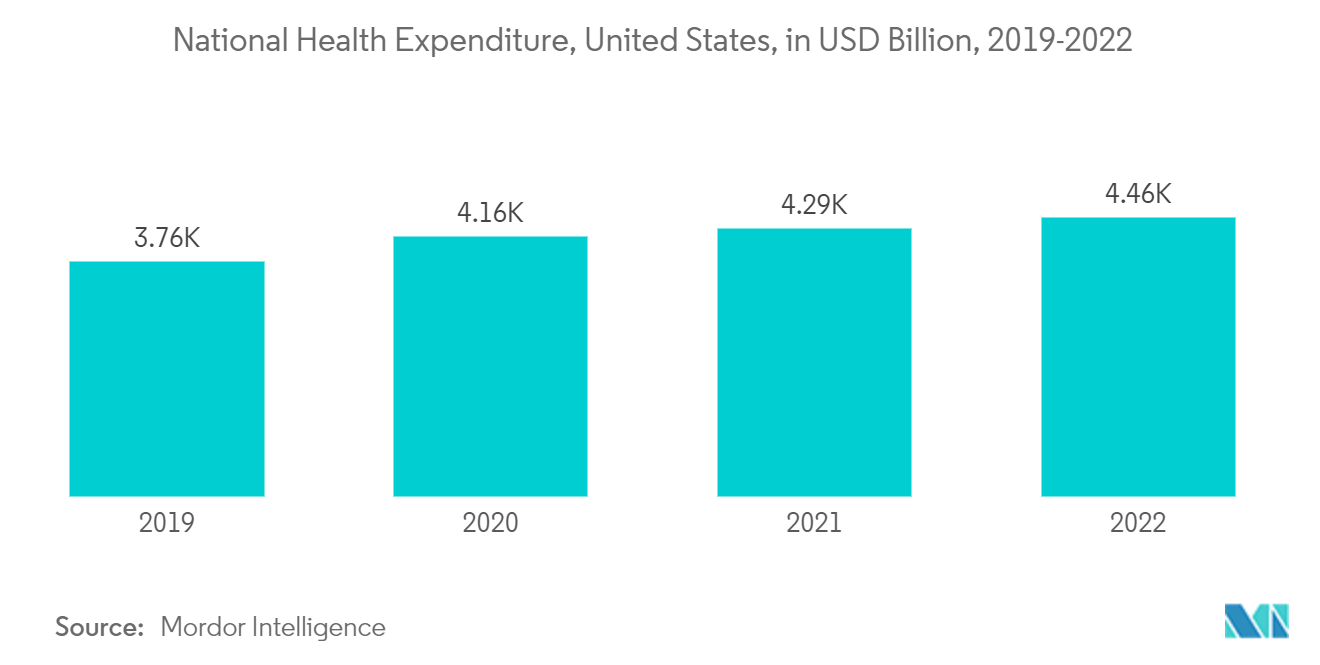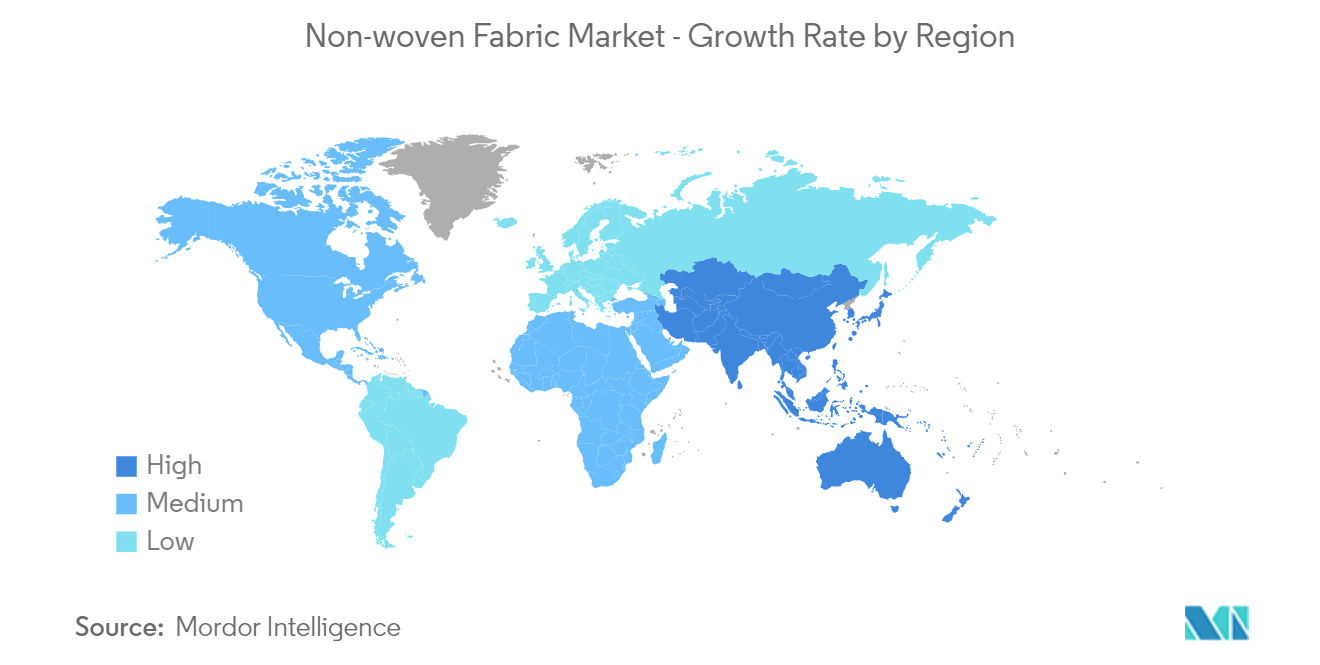Market Trends of Non-woven Fabric Industry
Increasing Demand from the Healthcare Industry
- Non-woven fabric is used to make various products in the healthcare industry, such as surgical gowns, aprons, drapes, face mask components, and wound dressings. They are also used in hygiene products, such as sanitary towels, sanitary napkins, tampons, baby diapers, and napkin liners.
- There has been a rise in various kinds of hygiene products in recent times due to the spread of various diseases and the increasing adoption of female hygiene products in various countries.
- According to the report released by the National Family Health Survey in 2022, around 77.6% use a hygienic method such as sanitary pads for menstrual protection. With the increase in the penetration rate of sanitary care products, owing to the increasing hygiene precautions, the market for non-wovens in the country is expected to grow rapidly.
- In addition, various companies are investing in the production of eco-friendly sanitary napkins due to raising environmental concerns. In 2023, Niine Sanitary Napkins, a major manufacturer of premium and affordable hygiene solutions in India, launched PLA-based biodegradable sanitary pads that are CIPET-certified.
- According to SDMA, in the United Kingdom, the total cost of wound management is estimated to be around EUR 8.3 billion (USD 9.7 billion). Around 67% of it is spent on managing unhealed wounds, potentially driving the demand for non-woven fabric in the market. The NHS manages around 7% of the world's adult population, which is equivalent to 3.8 million patients, every year.
- In addition, various companies are setting up manufacturing plants for bio-based diapers. In 2023, ANDRITZ started a bio-based diaper manufacturing plant in Bully Les Mines, France. The plant is equipped with special technologies to produce both traditional and bio-based baby diapers, supporting Naturopera in its efforts to become a leading producer of a new generation of sustainable diapers.
- All these factors are expected to have a positive impact on the demand for Non-Woven fabric in the healthcare industry during the forecast period.

Asia-Pacific is Expected to Dominate the Market
- Asia-Pacific is expected to be the largest consumer globally, owing to the commissioning of additional capacities and an increase in the production of non-woven fabric in the region. In terms of consumption and production of non-woven fabric, China held the largest share globally.
- The textile industry in China is booming, with increasing investments and government support. However, textile and apparel makers are experiencing slow growth due to various economic factors. For instance, in 2023, textile production in China was around 32.58 billion meters, according to the latest data released by the National Bureau of Statistics of China. The average monthly production of textiles in China was around 2.72 billion meters in the past year.
- Non-woven Fabs are widely used in the manufacture of electronic components such as batteries and capacitors. They are used as separators among the various layers of materials to prevent short circuits and improve device performance.
- Japan has been one of the major producers of consumer electronics in recent times. According to the data released by the Japan Electronics and Information Technology Industries Association (JEITA), the total production of electronic goods in the first eleven months of 2023 accounted for JPY 9.76 trillion (USD 66.28 billion) compared to JPY 10.06 trillion (USD 72.61 billion) in 2022.
- In the Construction industry, Non-woven fabrics are used for greenhouse shading, insulation, modified bitumen roofing, pavement overlays, roadway reinforcements, roofing components, and other such applications.
- China has the largest construction market in the world, encompassing 20% of all construction investments globally. China is expected to spend nearly USD 13 trillion on buildings by 2030, creating a positive market outlook for the modular construction market.
- Furthermore, the housing authorities of Hong Kong launched several measures for the construction of low-cost housing. The officials aim to provide 301,000 public housing units by 2030.
- All the factors mentioned above, in turn, are projected to drive the market at high rates in the Asia-Pacific region, owing to the rapid growth of end-user industries.


